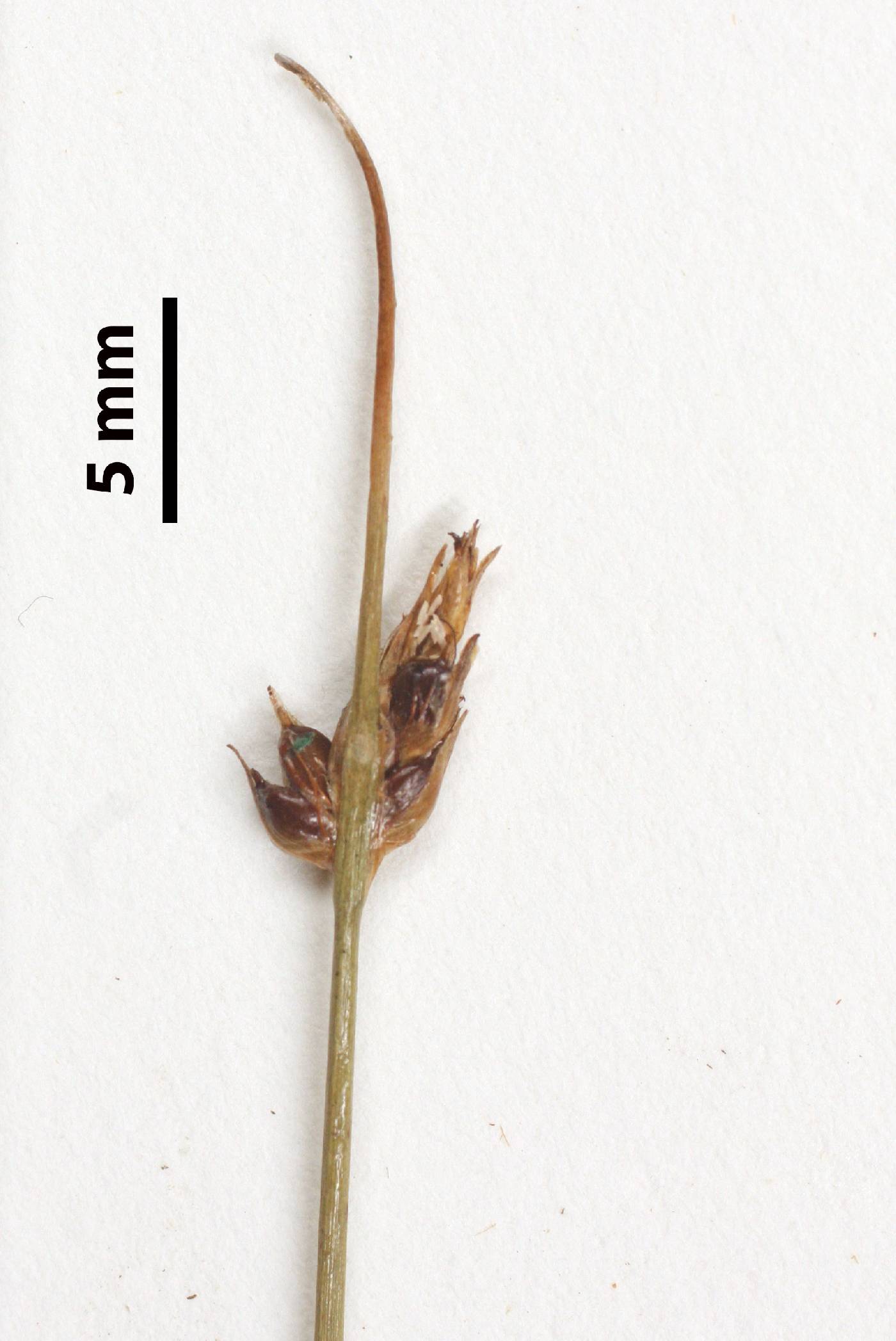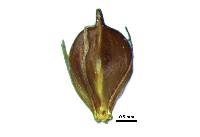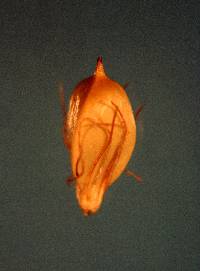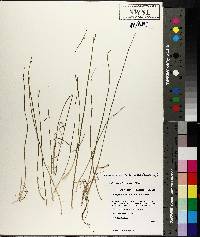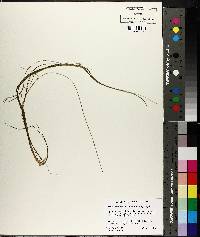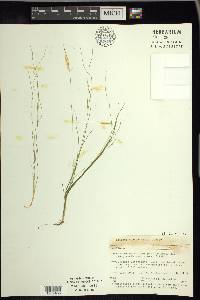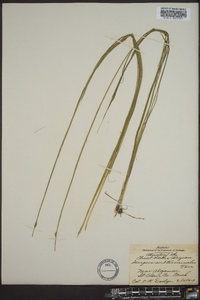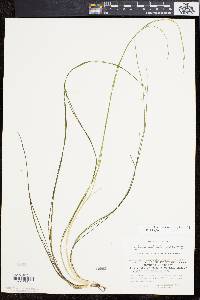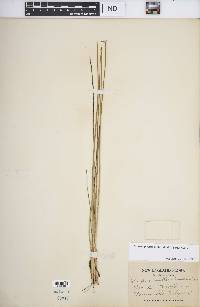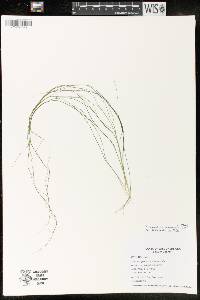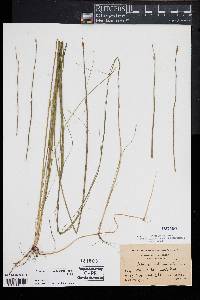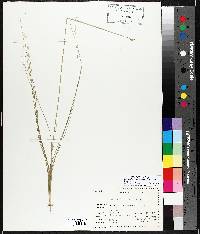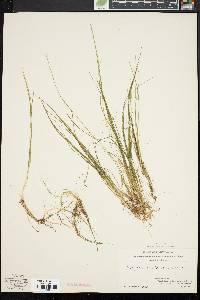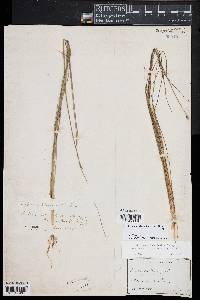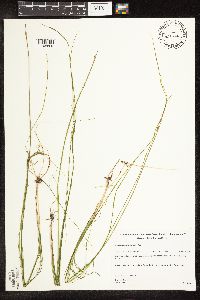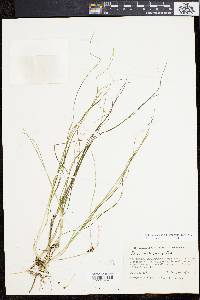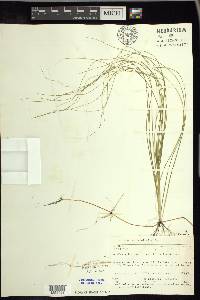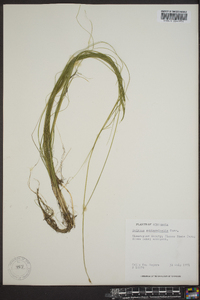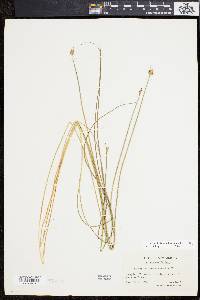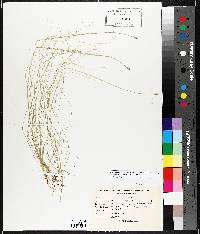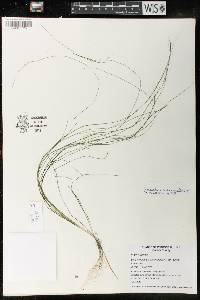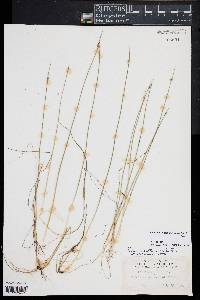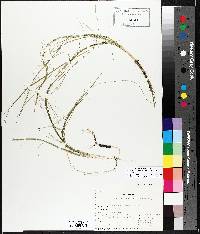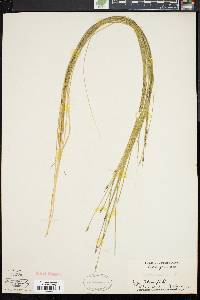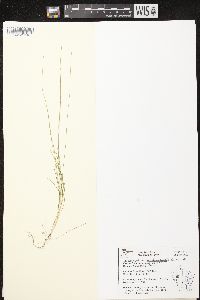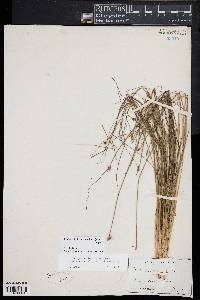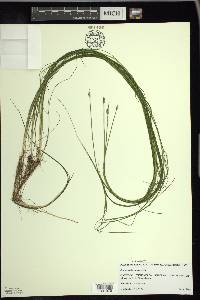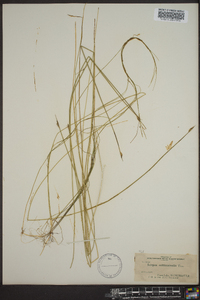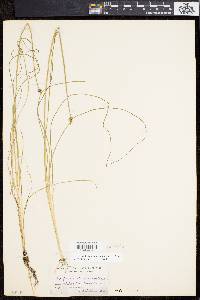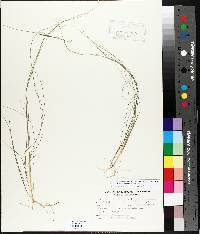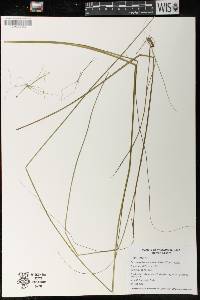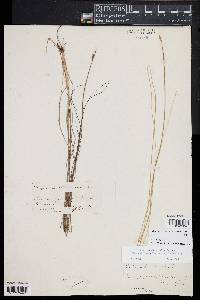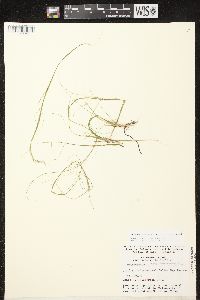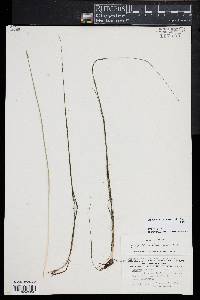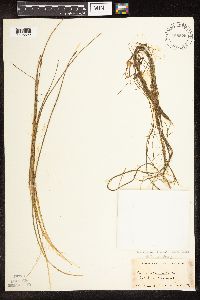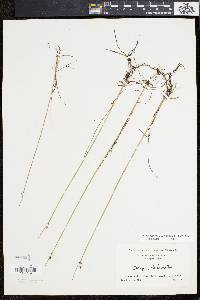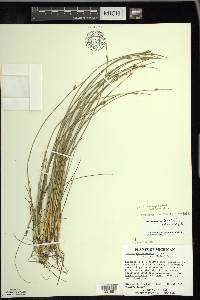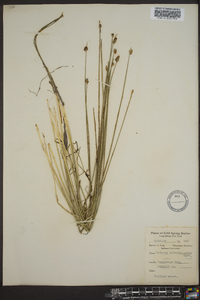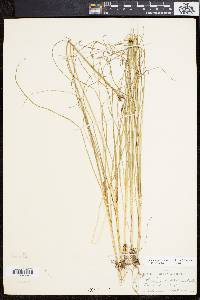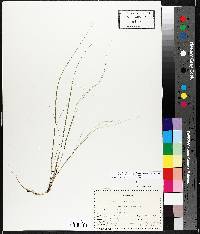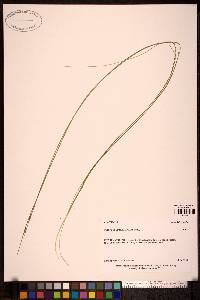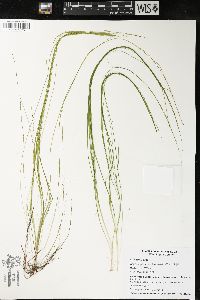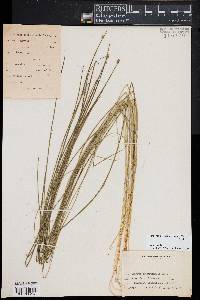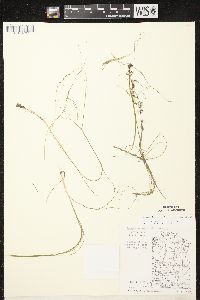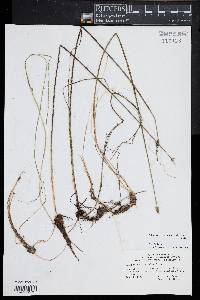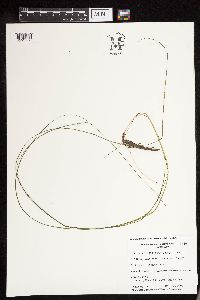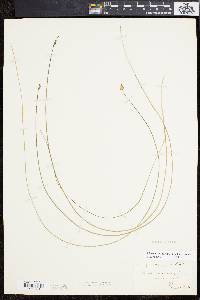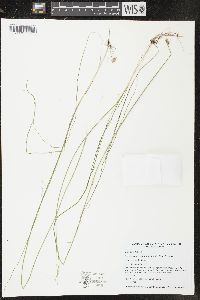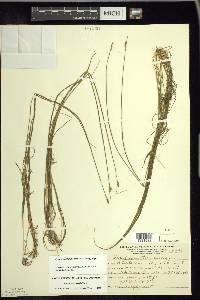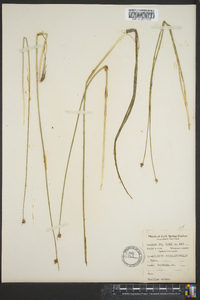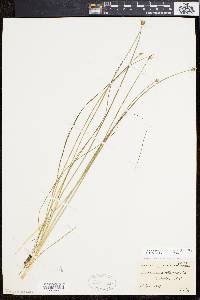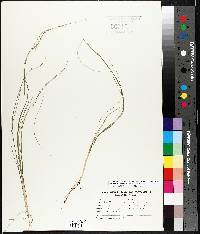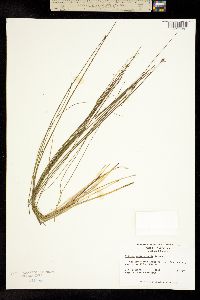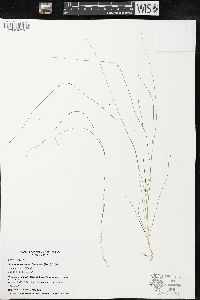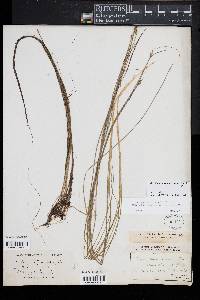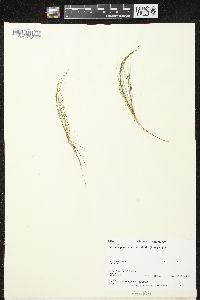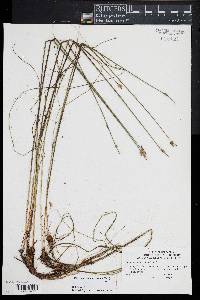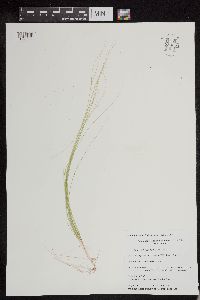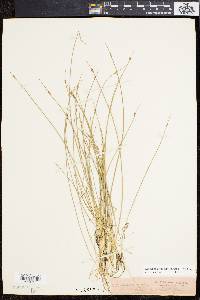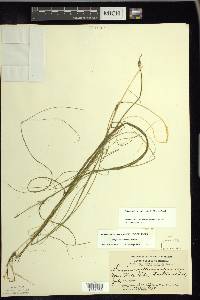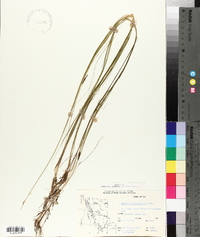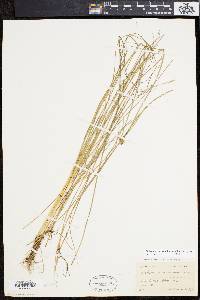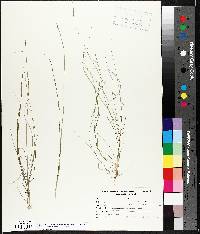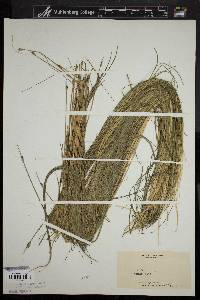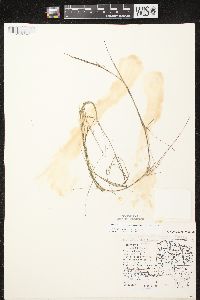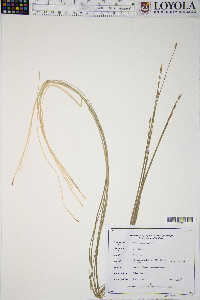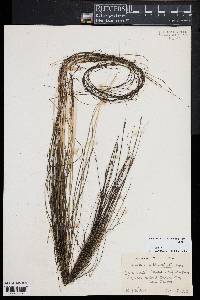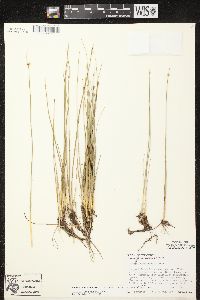Schoenoplectus subterminalis
|
|
|
|
Family: Cyperaceae
Swaying Wood Club-Rush, more...swaying club-rush
[Scirpus subterminalis Torr., moreScirpus subterminalis f. terrestris (Paine) Fernald, Scirpus subterminalis var. cylindricus (Torr.) T. Koyama, Scirpus subterminalis var. terrestris Paine] |
Plants mat-forming; rhizomes to 1 mm diam; terminal tubers sometimes present, to 3 mm thick, fleshy. Culms subcylindric, 0.2-1.5 m × 0.5-1 mm. Leaves 3-20+, smooth; sheath fronts sometimes delicately pinnate-fibrillose; blades 3-20, when erect C-shaped in cross section proximally, elliptic most of length, when submerged usually flaccid and filiform to narrowly ribbonlike, probably longer than sheath, 0.2-1 mm wide. Inflorescences a solitary, erect spikelet; proximal bract erect, like stiff leaf blade, 7-60 mm. Spikelets 5-15 × 3-7 mm; scales pale brown, or central region green when young, ovate-lanceolate, 4-6 × 1.5 mm, smooth, margins sometimes ciliolate apically at 40X, midrib obscure, apex acute, entire, minutely mucronate. Flowers: perianth members 6, brown, bristlelike, from 1/2 of to equaling achene beak, spinulose; anthers 2-3.5 mm; styles 3-fid. Achenes brown, strongly trigonous, obovoid to obpyriform, (2.5-)3-3.5 × 1.5-1.7 mm; beak 0.3-0.8 mm. 2n = 72. Fruiting summer. Submerged to emergent in water to 1 m or sometimes terrestrial, fresh lakes, streams, bogs; 10-2200 m; B.C., N.B., Nfld. and Labr., N.S., Ont., P.E.I., Que., Sask.; Ala., Alaska, Calif., Conn., Del., Fla., Ga., Idaho, Ill., Ind., Maine, Md., Mass., Mich., Minn., Mo., Mont., N.H., N.J., N.Y., N.C., Ohio, Oreg., Pa., R.I., S.C., Utah, Vt., Va., Wash., Wis. Schoenoplectus subterminalis often forms lawnlike, underwater mats that are entirely vegetative or have only the inflorescences emergent. This species is probably extirpated from Illinois. Schoenoplectus subterminalis var. terrestris Paine [= S. subterminalis forma terrestris (Paine) Fernald] probably does not deserve taxonomic recognition.
Perennial aquatic herb with thin rhizomes, mat-forming 20 cm - 1.5 m tall Leaves: basal, three to twenty or more. Sheath fronts sometimes with delicate pinnate fibers. Ligules membranous. Blades three to twenty, longer than sheath, mostly elliptic in cross-section but C-shaped basally when upright (when submersed, the leaves are usually flaccid and thread-like or narrowly ribbon-like), parallel-veined. Inflorescence: an upright, solitary spikelet subtended by bracts. Lowest bract leaf-like, stiff, upright, 0.5 - 6 cm long. Flowers: minute, subtended by a floral scale, lacking sepals and petals, bearing six bristles. Bristles brown, shorter than or slightly longer than achene, strap-like, bearing small spines. Stamens three, exserted. Anthers 2 - 3.5 mm long. Pistil one. Style linear, three-cleft. Fruit: a one-seeded achene, brown, 2.5 - 3.5 mm long (including beak), about 1.5 mm wide, reverse pear-shaped to reverse egg-shaped, beaked, strongly three-sided. Culm: flaccid, 20 cm - 1.5 m long, 0.5 - 1 mm wide, nearly circular in cross-section, solid, internally spongy with air cavities. Spikelet: 0.5 - 1.5 cm long, 3 - 7 mm wide, circular in cross-section, with eight or more floral scales. Floral scales spirally arranged, very thin, light brown, green down the middle when young, 4 - 6 mm long, 1.5 mm wide, egg- lance-shaped with a pointed apex bearing a tiny point, sometimes minutely hairy-fringed near the apex (at 40X). Similar species: No information at this time. Flowering: July to October Habitat and ecology: Rare in the Chicago Region and probably extirpated from Illinois. Found in the shallow water and on the muddy borders of ponds. Occurence in the Chicago region: native Etymology: Schoenoplectus comes from the Greek words schoinos, meaning rush or reed, and plectos, meaning twisted, plaited, or woven, referring to the use of the culms for making useful objects. Subterminalis means "nearly terminal." Author: The Morton Arboretum Rhizomatous, aquatic perennial with slender, subterete, flaccid stems to 1+ m, shortly emergent or merely floating distally; lvs ±numerous, capillary, arising from near the base and usually trailing just below the surface; seldom the plant ±terrestrial and with ±erect stem and lvs; bract (1-)1.5-6 cm, like a continuation of the culm; spikelet 1, light brown, ovoid to cylindric, 7-12 mm; scales 4-6 mm, very thin and almost hyaline, acute, with a firmer midrib that may be minutely exserted; bristles shorter than to occasionally shortly surpassing the achene; anthers (2-)2.5-3.5 mm; achene brown, trigonous, 2.5-3.8 mm including the prominent (0.5 mm) slender beak; 2n=74. Quiet or flowing water; Nf. to Alas., s. to S.C., Ga., Mo., Utah, and Calif. Fr July-Sept. (Schoenoplectus s.) Gleason, Henry A. & Cronquist, Arthur J. 1991. Manual of vascular plants of northeastern United States and adjacent Canada. lxxv + 910 pp. ©The New York Botanical Garden. All rights reserved. Used by permission. From Flora of Indiana (1940) by Charles C. Deam My only specimens were found in a colony on the muddy border of the south side of Long Lake, Porter County, about a mile east of the Lake County line, where it was associated with Scirpus validus. In walking the entire length of the lake I noted only one colony. This was in very mucky soil from which the water had receded just far enough to expose the soil. …… Indiana Coefficient of Conservatism: C = 10 Wetland Indicator Status: OBL |

